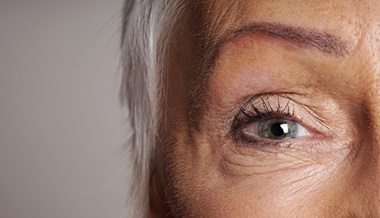Graves' Orbitopathy
What is Graves' orbitopathy?
Graves' orbitopathy is an autoimmune condition characterized by swelling of the tissue in the orbit (the area around the eyes), creating bulging of the eyes. It is commonly referred to as thyroid eye disease. This condition is associated with Graves' disease, which causes over activity of the thyroid gland (which sets the rate of metabolism in the body). Diagnosis of Graves' orbitopathy is made by an ophthalmologist.
What are the symptoms of Graves' orbitopathy?
Symptoms of Graves' orbitopathy include:
- Eye irritation or feeling that something is in the eyes
- Inflammation or redness of the conjunctiva (white part of the eye)
- Dry eyes or excessive tearing
- Bulging of eyes
- Double vision
- Swelling of eyelids
- Light sensitivity
- Inability to close eyes fully or move eyes
- Vision loss
How is Graves' orbitopathy diagnosed?
A diagnosis of Graves' orbitopathy is clinical. Thyroid function studies can be helpful, but in some cases are normal. To determine if Graves' orbitopathy is present, your doctor may require more scans, such as a computerized tomography (CT) scan or MRI, to identify changes in the muscles around the eyes.
How is Graves' orbitopathy treated?
Discomfort associated with Graves' orbitopathy may be relieved by applying a cool compress and by elevating your head to reduce pressure to the eye areas. Your doctor may prescribe medication or recommend eyedrops, or ointment to lubricate the eyes. Immunosuppression and radiation are often used during the disease's active phase. It is extremely important to avoid smoking and secondhand smoke, which make the disease much worse.
Surgery may be needed to address more severe forms of Graves' orbitopathy. Procedures include:
- Eyelid surgery to reposition the eyelid
- Eye muscle surgery to address overly tight eye muscles
- Orbital decompression surgery to remove bone between the areas around the eyes (orbits) and the sinuses to create more space for swollen muscles
You and your doctor will discuss the right course of treatment based on your symptoms and diagnosis.






